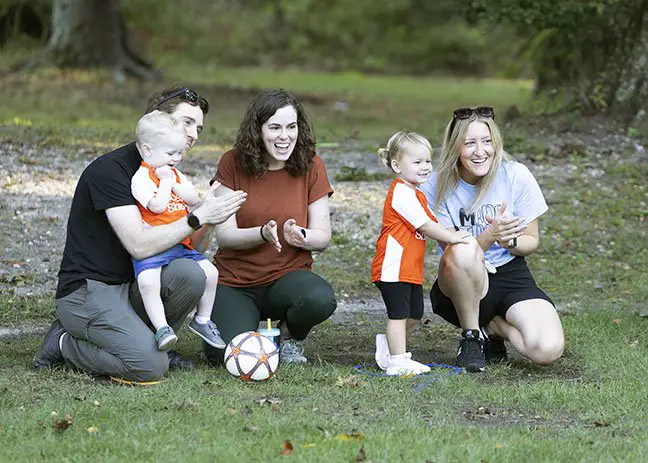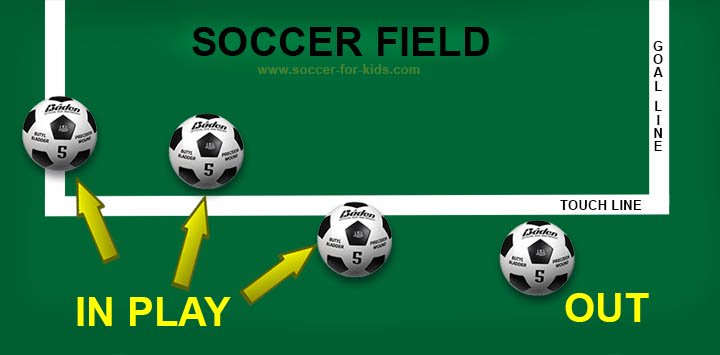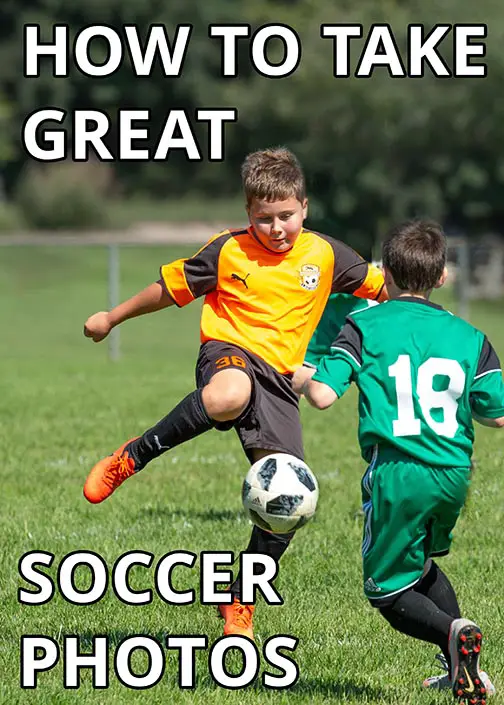How to Photograph Kids Soccer Games
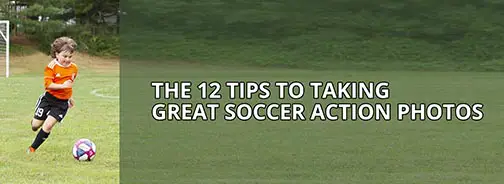
Soccer games can be very difficult to photograph, but they don't have to be. Follow a few tips on equipment and technique and it will much be easier for you. This guide will give you the info you need for successful photography of your kids soccer game. Like with other sports, the action in front of you is constant and the game situation is always changing.
Photography of youth soccer presents unique challenges. Unlike baseball and football, where the specific positions of players are more defined, soccer players are moving all over the field as well as constantly facing in different directions. Let's dive into 12 points for you to know about.
Best Tips For Taking Kids Soccer Game Photos
Here are the top 12 tips for getting great shots of your kid playing soccer.
1. USE THE RIGHT GEAR. Use the best equipment you can get your hands on. Whether you're in the market to buy, rent , or frugally borrow a friend's camera gear, you'll be more successful with a good camera and lens. Your smartphone or a point-and-shoot camera won't get the job done very well at all. See the sections in this post on camera and lens recommendations.
2. PAY ATTENTION TO THE LIGHTING. Bright sunny days are better because you get faster shutters speeds to freeze the action. You can't control the lighting on game day, but you can control what day to shoot soccer photos on. Additionally, you'll get better results if the sun is behind you, or to the side of you as the photographer.
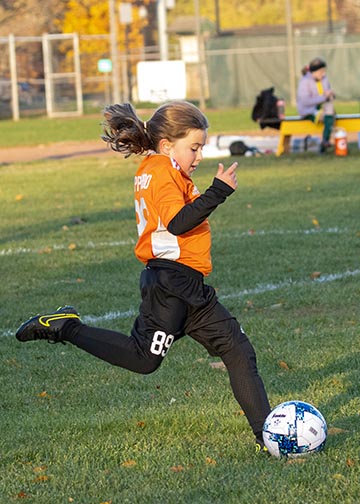 Good timing....
Good timing....Distracting background.
3. WATCH THE BACKGROUND. It's easy to focus your attention on your athlete and ignore what's in the background. Choose the best vantage point, if you can, to avoid distracting elements, like cars or buildings, in the background.
4. PRE-FOCUS IN ADVANCE. Pricey professional sports cameras are super fast at focusing when paired with the right lens. If you have more mid-range equipment you can gain an advantage by focusing on a spot that is at an equal distance to the spot where you're about to take your photo. Just aim at the spot, press the shutter button halfway to focus, and then press it fully down. Use spot or central area
5. BATTERY. It's super important to have a fully charged battery. If it's an older battery, a 2nd battery is super easy to bring along and you'll avoid that sickening feeling you get from seeing your "low battery" warning flashing.
6. MEMORY. As equally vital to do before game time, check the status of your memory card. You'll be shooting a lot of photos, perhaps in the hundreds if you're shooting with your camera on burst mode. A freshly formatted memory card is your best friend. If you have a low capacity card replace it with a higher capacity memory card. They are dirt cheap nowadays.
7. CAMERA SETTINGS. Setting your camera on Sports/Action Mode is what newbie soccer game shooters are tempted to use. There's nothing wrong with that. It's a good setting, but I'd argue it's not always going to give you the best results you're after.
Shutter priority is the best camera mode to use for photographing kids soccer games. That lets you set a quick enough shutter speed to freeze the action and the camera will pick the right aperture to give you a proper exposure. You can set shutter speed based on the speed of the soccer players you're photographing.
Some cameras have a separate mode called burst mode. Also known as continuous shooting, continuous mode, or burst shot, this feature enables your camera to fire off photos in rapid succession by holding the shutter button down. This helps you get that epic "perfect timing" action shot of your soccer athlete making the play.
8. SHUTTER SPEED. You want to know what's the best the best shutter speed for photographing a kids soccer game. As a starting point, use 1/250 second or faster. That should be fine for the really young kids, ages 2-4. Try 1/500 second for kids ages 5-10, and 1/000 second for pre-teens and older. See this article on understanding shutter speed for sports and other situations
9. ISO SETTING. This is a little more advanced of a topic for beginning sports photographers, but don't let that stop you. Understanding ISO will help you get great soccer photos under different lighting conditions. Here's a post on understanding ISO.
10. APERTURE. An unusual recommendation for shooting a soccer game, but one that mike work for you is to use aperture priority and shoot with your lens set at its widest aperture. That let's as much light into your camera as possible for the lens you are using. That automatically gives you a faster shutter speed for sharp photos.
11. FOCUS SETTING. Auto-focusing is a must and servo auto-focusing enables your camera to adjust the cameras focusing as your subject moves. It can slow down your camera's burst rate, so use this one with caution.
12. ANTICIPATION. The more youth soccer games you watch and/or photograph, then the more you'll be able to have a feel for where the best action is going to happen. Like any other learned skill, the more you shoot the better action photos you get. Remember to have fun-It's a game.
Best Lens For Photographing youth soccer
Fortunately, with youth soccer you don't need as much zoom power built into your lens as you do with photographing soccer games on full sided fields. The fields are so much smaller. Additionally, you can get a lot closer to the edge of the field with a kids soccer game compared to how close you can get at a larger venue, where fences and stadium seating come into play.
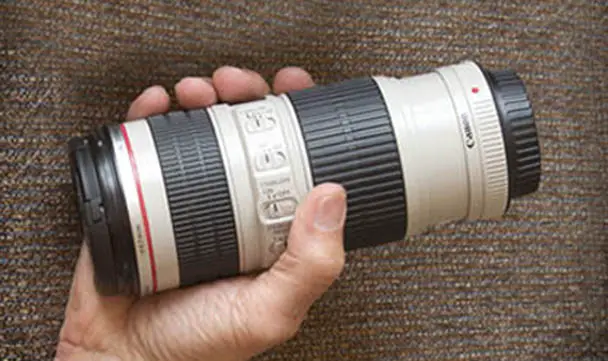 Canon 70-200mm lens
Canon 70-200mm lensGood for small sided soccer games
FOCAL LENGTH. Medium telephoto zoom lenses that zoom into 200 or 300mm are plenty powerful to get action shots of individual soccer players. A lens with a decent zoom range is a big plus because you'll be alle to compose good shots close to you as well as farther across the field of play. Depending on the brand you use, good focal length ranges are 55-250mm, 70-200mm, 18-400mm.
For full side soccer fields and larger venues you need lenses such as the 100-300mm, 200-500mm, 150-600mm
MAXIMUM APERTURES. Fast maximum aperture is a bonus if you're shooting under the lights or on a dark dreary day when light levels are low. Lenses with a maximum aperture of around f/4 are good, but faster lenses like f/2.8 and f/2 are better. Faster lenses are larger, heavier, and much more of an investment and are the choice of serious sports photographers and professionals.
Lenses with large maximum lens openings are also good for giving you pleasantly blurred objects behind your subject. That makes the background less distracting and emphasizes you subject.
Best Camera For Photographing youth soccer
Although it would be nice to have one, you don't need to have a professional DSLR or high end mirrorless camera to get some stunning action photos of the game. Technology has improved the hobbyist and enthusiast level cameras to a point where they're plenty capable. There are a few features to look for when search for the best camera for photographing youth soccer.
INTERCHANGABLE LENS CAMERA. Abbreviated as ILC, it's important to have a camera with the capability to change lenses to match the needs of your situation. Cheaper non-ILC cameras have shutters that are slow to respond and don't focus as well.
VIEWFINDER. Use a camera that has a viewfinder. Cameras that only have an LCD screen on the back of the camera are awkward to use to shoot fast-paced action photos.
FAST FOCUSING. This is one of the most important features to watch for. It's really dependent on both the camera and lens combination you choose. Slow focusing cameras are not good for fast moving subjects.
QUICK BURST RATE. You're more likely to get the perfectly timed action photo if you're camera is taking more photos per second. When using a camera with only a few frames-per-second shooting, you can get lucky with timing, but a faster frame rate increases your chances. For youth soccer 5 frames-per-second (fps) is good, Seven or more fps is ideal.
See the article on my photography website on the best sports camera.
Youth Soccer Photography Summary
A lot goes into the success of getting great photos of your child playing soccer. Mid-range camera equipment is adequate, although the better the equipment you start with the faster your progress will be.
The more you try it the better you'll be at it and If you are considering investing in a decent camera and lens, realize you'll be able to use it for other types of photography.
A good sports camera will also perform well for shooting candids, landscapes, portraits, wildlife, and other sports and action photos. One of the most enjoyable types of photography for me was my kids playing sports. My hope is that this article will help make it one of yours too!
Keep it fun!
As an Amazon associate, soccer-for-kids receives a small commission for qualifying purchases. There is no cost to you. Zero!

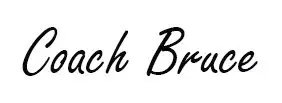
Bruce began shooting photos in 4th grade and started playing soccer in 1974. As a young boy, he constructed his own makeshift soccer goal. He played in high school, then intramurally in college and beyond. He began his pro photography career in 1984. Then he ran a Soccer Shots franchise for 12 years. Now, Bruce publishes the soccer-for-kids.com website and 2 photography websites.
Soccer-for-kids.com is a participant in the Amazon Services LLC Associates Program, an affiliate advertising program designed to provide a means for sites to earn advertising fees by advertising and linking to Amazon.com
